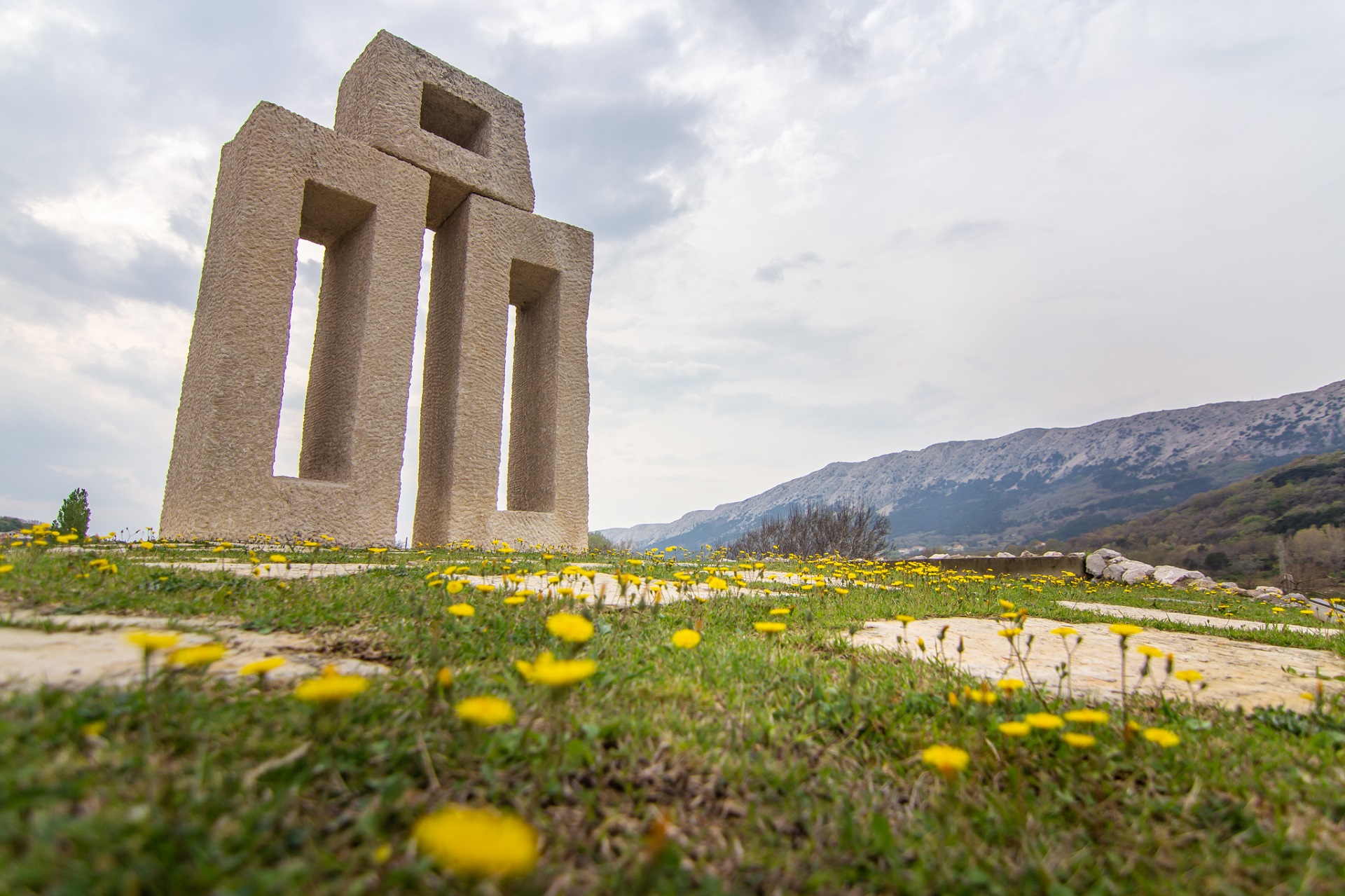An ancient custom on Krk island involves planting a kiss on a wet rock on the side of the road. Looking into the curious ethnological phenomenon on February 1, 2022
Many holidaymakers have discovered the charms of Baška, a picture-perfect town on Krk island. There’s plenty for this dreamy destination to boast, including a 1800m long pebble beach ideal for those who love to soak up the sun, and adventure trails for visitors who prefer an active vacation.
Visiting Baška wasn’t such a simple feat back in the day, judging by an ethnological phenomenon described by Alan Žic-Teklin of KrkDiscovered. When arriving in Baška for the first time, one was obliged to kiss a wet old woman on the way to town. No, this doesn't sound any more enticing nor any less wrong in Croatian: poljubiti mokru babu.
(Baba stands for old woman, crone or grandma, depending on the context. In this scenario, it falls somewhere between the first two, but we’ll go with the more respectful option to avoid upsetting any ancient spirits. You never know.)
Thankfully, this particular baba was simply a common nickname for stone monoliths scattered over the island. Always located in damp spots near water springs - hence the wet part of the name - the rocks were referred to as babe and the custom dictated to give them a kiss when passing by.
Where did this come from? Legend has it that St Jerome (4th century AD) was visiting the bishop of Krk and got thirsty while traversing the island. He hit a rock with his staff, causing water to spring from stone.
Since one would have to lean close to the rock and press their lips against the surface to get a drink of water, this would have resembled kissing the rock, and so the saying was born.
Legends aside, the local custom of kissing the stone baba has long been a subject of interest of historians and ethnologists. Jelka Vince-Pallua, PhD proposed a theory that the custom originates from ancient fertility cults that were practised before the monoliths, while ethnologist Nikola Bonifačić-Rožin considers that the ‘old women’ stem from an ancient superstition that the rocks will prevent the floods from washing away precious fertile soil.
The best known baba on Krk island used to be located on the side of the road at the locality Žanac near Baška. The ancient rock isn’t there anymore and has been replaced with another one, but to keep up with tradition a pipe has been installed on the location, allowing passersby to get a drink of cold water.
And the new rock that stands in place of the old monolith? It’s part of the Baška Glagolitic Alphabet Trail, a series of 35 stone sculptures displayed on a trail meandering through the Baška Valley, each bearing a different letter of the Glagolitic alphabet.
Glagolitic letters Ž and E are carved into this particular stone, standing for Žanac est! Loosely translated, it means ‘Here is the Žanac spring!’ pointing to the wealth of water resources in the area. As early as the Stone age, people inhabiting Krk island first settled in Baška Valley precisely for its many water springs.
Even though it’s not the original baba, the sculpture allows travellers in passing to respect the ancient custom and give baba a peck on the cheek if they so decide. Don’t find the prospect that enticing? You can simply mark the sculpture on your Glagolitic Trail guide - every monument has a small plaque with raised letters you can copy into the blank pages in the guide. (Copy them all as proof you visited all the locations on the trail, and you get a little gift.)

The letter L, sculpture by Ljubo de Karina / visitbaska.hr
The Glagolitic Trail project was devised by the Sinjali Association for culture, tradition and ecology from Krk. Each sculpture was sponsored by a different town; four were created by the renowned Croatian sculptor Ljubo de Karina, the rest were made by fifteen art academy students from Croatia, Slovenia, Austria and the Czech Republic.
The trail was created to highlight the rich cultural heritage of Krk island and to serve as a reminder of the importance of the Glagolitic alphabet in Croatian history. The Baška tablet in particular - perhaps the most distinguished attraction in Baška, at least where Croatian culture and history are considered.
Discovered in the church of St Lucy in Jurandvor and dating to 1100, the limestone tablet is a legal document bearing an inscription where the Croatian name (hrvatski) is mentioned in writing for the first time in history, in Glagolitic script.
You can learn more about the Baška Glagolitic Trail in this pdf guide, and follow Krk Discovered on Facebook.


